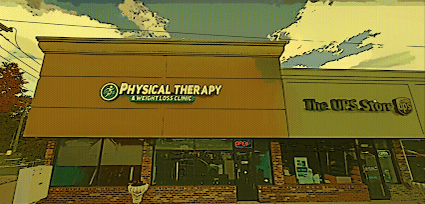Most back surgeries are very costly. They can range from $50,000 to $150,000 without insurance. More importantly, they are ineffective and can even worsen the problem. Back surgeries are used to correct a physical deformity. They can take pressure off a nerve root or the spinal cord, stabilize an unstable part of the back that is causing pain, or fix a deformity, such as scoliosis. Many of these back surgeries can be avoided, however. Here are some tips so you don’t fall for back surgery.

Exercise
Most people think that rest and restrictions are the best ways to help back pain. However, exercise is one of the best ways to help. Exercise will help strengthen your muscles and the structures in the back. It will also get the blood pumping. This helps send oxygenated blood to the area.
Diet/Weight Loss
A healthy diet plays a big role in the health of your spine. Junk food can cause inflammation in your spine. This can lead to pain or compression in the area. A healthy diet will also help you maintain a healthy weight. This means you’re not over-stressing your spine.
Physical Therapy
Physical therapy is similar to exercise in that it promotes muscle development. However, physical therapy specifically targets the problem areas of your back. It’s great for conditions like bulging discs or sciatica pain because it works to relieve compression or pressure in the area. Your doctor will give you home exercises that you should do when you are not at the clinic. Make sure to do these to help in your recovery to avoid back surgery.
Injections
Injections can relieve the pain from an irritated or compressed nerve. There are a number of different pain injections available. You will want to consult with a spine specialist to make sure you are receiving the right injection for you.
Spinal Manipulation
If you have an alignment issue, then spinal manipulation or chiropractic care may be for you. It can help you to realign your spine and avoid unnecessary back surgery. For those who have a pinched nerve or disc alignment issue, then careful manipulation by a professional can really help.
Research
According to the Health Services Research journal, a study was done to track 150,000 back pain patients. Researchers looked for differences in the kind of health care used and how much it cost over the course of a year among patients who saw a physical therapist (PT) first, those who saw a PT at a later time after an initial visit with another provider, and those who never visited a PT during the study period. To qualify for the study, patients had to have no prior history of Lower Back Pain (LBP), back surgery, or other conditions that may have caused back pain.
Patients who received care from a PT first experienced lower out-of-pocket, pharmacy, and outpatient costs. They also reduced their likelihood of receiving an opioid prescription by 87% compared with patients who never visited a PT. They also had a 28% lower probability of having imaging services. Not to mention 15% lower odds of going to the emergency room.
Researchers believe that physical therapists are trained to have very specialized knowledge about pain management, especially in the muscular-skeletal system. This allows them to decrease a patient’s pain and improve movement. Therapists can guide patients through exercise routines that strengthen muscles and help them develop control over their movements. These exercises help patients manage their current pain, avoid back surgery and prevent their condition from getting worse in the future. Click here to learn about the different types of back surgeries.



